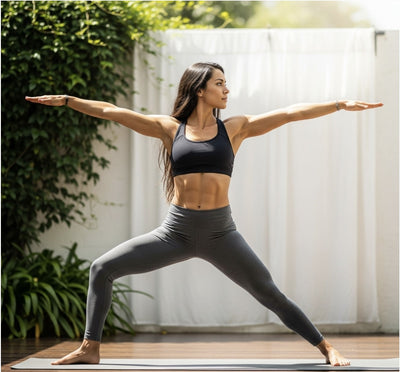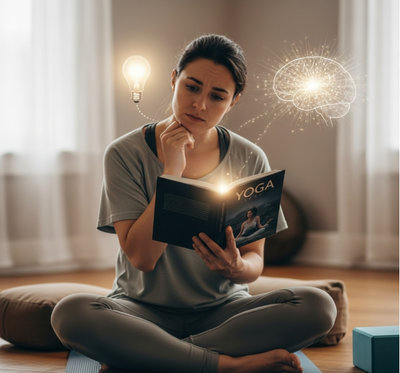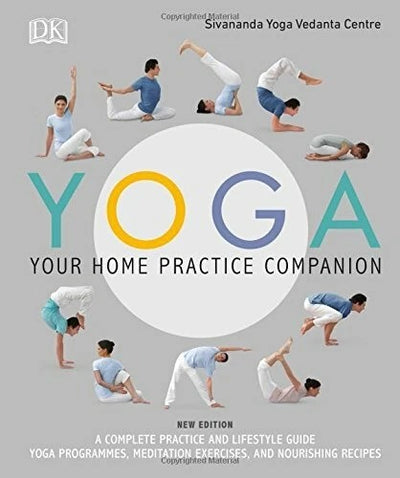
Combining Yin Yoga with Other Yoga Styles - 5To9Style
Share
Combining Yin Yoga with Other Yoga Styles
The Perfect Harmony: Why Combining Yin Yoga with Other Styles Makes Sense
In the diverse world of yoga, practitioners often gravitate towards one style that resonates most with them. However, for a truly holistic and balanced yoga practice, combining Yin Yoga with other yoga styles like Vinyasa Flow, Ashtanga Vinyasa, or even more dynamic practices like Hatha, offers profound benefits. This intelligent pairing ensures that you work all aspects of your body and mind, preventing imbalances and accelerating your overall growth.
Understanding how to integrate Yin Yoga, with its focus on connective tissues and long holds, alongside more active, "Yang" styles, can transform your practice, making it more effective, sustainable, and deeply enriching.
1. Balancing Yang (Muscles) with Yin (Connective Tissues)
Most active yoga styles (Vinyasa, Ashtanga, Hatha) are considered "Yang" practices. They involve muscular engagement, repetitive movements, and aim to build strength, stamina, and heat. They primarily work the muscles, which are elastic and respond well to rhythmic contraction and release.
Yin Yoga, on the other hand, is a "Yin" practice. It targets the deeper, less elastic connective tissues – the fascia, ligaments, tendons, and joint capsules – by holding passive postures for extended periods (typically 3-5 minutes or more).

- Complementary Strengths: Yang styles build muscular strength and cardiovascular health, while Yin styles increase joint mobility and flexibility in the denser tissues. Combining them ensures a balanced development of both.
- Injury Prevention: Active yoga can sometimes neglect the deep connective tissues, leading to stiffness or imbalances over time. Yin Yoga directly addresses these areas, making the body more resilient and less prone to injury from dynamic movements.
- Fuller Range of Motion: While active stretching works muscles, Yin Yoga's sustained pressure on ligaments and fascia can unlock a truly deeper and more sustainable increase in joint flexibility, enhancing performance in Yang practices.
2. Balancing Energy: Activity with Calm
Our modern lives are often dominated by "Yang" energy – constant activity, mental stimulation, and external demands. This can lead to stress, anxiety, and burnout.

- Nervous System Regulation: Active yoga can invigorate, but Yin Yoga is profoundly calming for the nervous system. The long, still holds activate the parasympathetic "rest and digest" response, helping to reduce stress, lower blood pressure, and improve sleep.
- Mental Clarity: While dynamic practices build focus, Yin Yoga cultivates a unique kind of mental stillness and resilience, teaching you to sit with discomfort and observe your inner landscape without reacting. This deep introspection provides a vital counterbalance to the external focus of active styles.
- Emotional Release: The deep physical release in Yin can also facilitate the release of emotional tension stored in the connective tissues, leading to greater emotional balance.
- Rejuvenation: Yin offers deep rest and replenishment, helping to restore energy levels depleted by active pursuits.
3. Practical Ways to Combine Styles
Integrating Yin and Yang practices into your routine is simpler than you might think:
- Alternate Days: Dedicate certain days to active practices (e.g., Vinyasa or Ashtanga classes) and other days to Yin Yoga.
- Pair Within a Week: For example, practice 2-3 active classes and 1-2 Yin classes per week.
- Combine in a Single Practice: Some teachers offer "Yin-Yang" classes that start with a dynamic flow and end with longer Yin holds. You can also do this at home: a short active sequence followed by a few Yin poses.
- Listen to Your Body: Pay attention to what your body needs. On days you feel energetic, go for Yang. On days you feel tired or stiff, embrace Yin.
- Utilize Props: Both styles benefit from props. In active classes, yoga blocks and yoga straps can aid alignment and accessibility. In Yin, yoga bolsters and yoga blankets are essential for comfort and deep release.
The blend of challenging movement with profound stillness, and muscular strength with connective tissue pliability, creates a comprehensive yoga practice that fosters true balance – physically, mentally, and energetically. Investing in versatile yoga equipment, including a supportive yoga mat and comfortable yoga wear, can enhance your experience across all styles.
Create Your Balanced Yoga Journey
Ready to experience the comprehensive benefits of combining Yin Yoga with other yoga styles? Embrace this balanced approach to unlock greater flexibility, reduce stress, and cultivate holistic well-being. For a wide selection of high-quality yoga mats, versatile yoga props, and comfortable yoga clothing suitable for both active and passive practices, explore our full collection at https://5to9style.com/collections/all.
Start your journey to a harmonious and complete yoga practice today. Visit our homepage for more insights and to discover products that align with your mindful lifestyle: https://5to9style.com.









